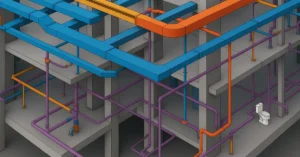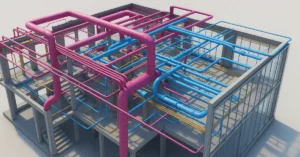Palestinian Architecture: A Rich Tapestry of History and Innovation
The architectural landscape of Palestine is a reflection of the region’s diverse history, culture, and the constant struggle for identity. From ancient historical landmarks to modern structures, Palestine’s architecture is a testament to the enduring spirit of its people. In this blog, we will explore the rich tapestry of architecture in Palestine, from its historical roots to contemporary developments.

Exploring the Soul and Innovation of Palestinian Architecture
1. Historical Roots
1.1 Ancient Treasures
Palestine’s architectural history dates back thousands of years, and it is closely intertwined with the history of the land and its people. The region is home to some of the world’s most ancient architectural treasures.
1.2 The Dome of the Rock
One of the most iconic architectural landmarks in Palestine is the Dome of the Rock in Jerusalem, a magnificent Islamic shrine constructed in the 7th century. It features a stunning golden dome and intricate mosaic work, symbolizing the region’s religious and historical significance.
2. Influences and Styles
2.1 Architectural Influences
Throughout its history, Palestine’s architecture has been influenced by various civilizations and empires, each leaving its mark on the region. Ottoman, Roman, Byzantine, and Islamic architectural styles have all played a role in shaping the built environment of Palestine.
2.2 Traditional Palestinian Architecture
The traditional Palestinian architecture often features charming stone houses with flat roofs, arched doorways, and shaded courtyards. These designs are not only aesthetically pleasing but are also functional, providing relief from the harsh Mediterranean sun.
3. Challenges and Innovation
3.1 Adapting to Adversity
The tumultuous history of Palestine has presented numerous challenges to its architecture. Political conflict, occupation, and limited resources have forced Palestinians to innovate and adapt their architectural practices.
3.2 Sustainability and Tradition
In response, architects and builders have incorporated sustainable practices, such as rainwater harvesting and passive cooling systems, into their designs. The use of traditional building materials like limestone and mud bricks remains prevalent, connecting the present to the past.
4. Modern Palestinian Architecture
4.1 A Blend of Tradition and Modernity
Contemporary Palestinian architects have embraced a combination of traditional and innovative approaches. Modern buildings blend traditional elements with modern design to create structures that reflect the changing needs of Palestinian society.
4.2 The Palestinian Museum
The Palestinian Museum in Birzeit, designed by Heneghan Peng Architects, is an excellent example of this fusion. It showcases the beauty of contemporary Palestinian design while respecting the cultural heritage of the region.
5. Challenges of Urbanization
5.1 Urban Transformation
Palestinian cities are experiencing rapid urbanization, which presents its own set of challenges. Increasing population density and the need for infrastructure development require architects to balance modernization with preserving the cultural and historical identity of the region.
5.2 Navigating Complex Terrain
Navigating these challenges is a delicate task that architects in Palestine are taking on with ingenuity and resourcefulness.
6. The Future of Palestinian Architecture
6.1 Embracing Sustainability
The future of architecture in Palestine holds promise as architects continue to draw from their rich history and adapt to the demands of the modern world. Sustainable and eco-friendly designs are gaining traction, responding to the global call for environmentally conscious construction.
6.2 Nurturing Talent
There is a growing focus on fostering local talent and architectural education within the region. Palestinian architects are increasingly working to nurture a new generation of builders and designers, ensuring that the legacy of their unique architectural heritage endures.
Conclusion
Architecture in Palestine is a reflection of a resilient people, a rich history, and a diverse culture. From the ancient wonders of Jericho to the innovative designs of modern Palestinian architects, the architectural tapestry of this land tells a story of survival and adaptation. The challenges faced by Palestine have not stifled its creative spirit but have, in fact, fueled it. As the region continues to evolve, so too will its architecture, preserving the past while embracing the future. Palestine’s architectural heritage is a testament to the enduring power of culture and history in the face of adversity.
If you’re interested in learning more about architecture firms in Europe, check out this comprehensive list of the top 50 firms compiled by Archgyan. From innovative startups to long-established industry leaders, this list has it all. Take a look and discover some of the most inspiring and influential architecture firms in Europe today.
If you’re interested in architecture and want to learn more about this amazing field, subscribe to our podcast on youtube
For more SketchUp tutorials, head to https://www.sketchupguru.com










